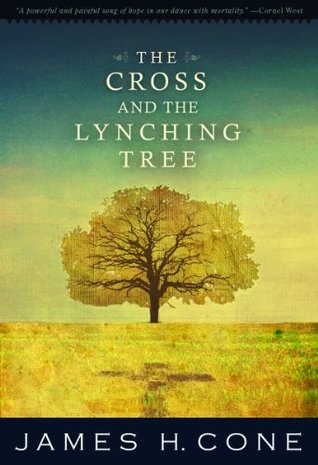More on this book
Community
Kindle Notes & Highlights
Until we can see the cross and the lynching tree together, until we can identify Christ with a “recrucified” black body hanging from a lynching tree, there can be no genuine understanding of Christian identity in America, and no deliverance from the brutal legacy of slavery and white supremacy.
The cross helped me to deal with the brutal legacy of the lynching tree, and the lynching tree helped me to understand the tragic meaning of the cross.
The cross is a paradoxical religious symbol because it inverts the world’s value system with the news that hope comes by way of defeat, that suffering and death do not have the last word, that the last shall be first and the first last.
Lynching was an extralegal punishment sanctioned by the community. Many scholars date its origin in Virginia during the Revolutionary War when Charles Lynch or William Lynch (both were called the original “Judge Lynch”), with the support of the community, punished Tory sympathizers.
Postcards were made from the photographs taken of black victims with white lynchers and onlookers smiling as they struck a pose for the camera. They were sold for ten to twenty-five cents to members of the crowd, who then mailed them to relatives and friends, often with a note saying something like this: “This is the barbeque we had last night.”
There were many “sundown towns” in the South and the North—some with signs warning, “Nigger, don’t let the sun set on your head,”[23] and others with no signs but which could be fatal to blacks who happened to be passing through.
The cross places God in the midst of crucified people, in the midst of people who are hung, shot, burned, and tortured.
most Americans have been for so long, so safe and so sleepy, that they don’t any longer have any real sense of what they live by. I think they really think it may be Coca-Cola.
Black ministers preached about Jesus’ death more than any other theme because they saw in Jesus’ suffering and persecution a parallel to their own encounter with slavery, segregation, and the lynching tree.
Wells was especially critical of evangelist Dwight Moody, who segregated his revivals to appease whites in the South. “Our American Christians are too busy saving the souls of white Christians from burning in hellfire to save the lives of black ones from present burning in fires kindled by white Christians.” “Christianity is to be the test,” Wells claimed, that whites failed miserably in their treatment of blacks. She was “prouder to belong to the dark race that is the most practically Christian known to history, than to the white race that in its dealings with us has for centuries shown every
...more
The lyrics of “Strange Fruit” were written in the early 1930s by Abel Meeropol (a.k.a. Lewis Allen), a white Jewish school teacher from New York City, who later adopted the two sons of convicted spies Julius and Ethel Rosenberg. Upon seeing the well-known Lawrence Beitler’s photograph of the lynching of Thomas Shipp and Abram Smith in Marion, Indiana (1930),[37] Meeropol became so incensed that he wrote a poem to express what he felt. “It . . . haunted me for days,” he recalled later. “I wrote ‘Strange Fruit’ because I hate lynching and I hate injustice and I hate the people who perpetuate
...more
“Strange Fruit” captures the great contradiction in southern culture and the religion that defined it. “Lynching is part of the religion of our people,”[39] one white man told another.
It was fitting for a Jew to write this great protest song about “burning flesh” because the burning black bodies on the American landscape prefigured the burning bodies of Jews at Auschwitz and Buchenwald. “Strange Fruit” was also “an early cry for civil rights,” a prophetic call for blacks to take up the cross of black freedom because nobody was going carry it for them.
God was also present at every lynching in the United States. God saw what whites did to innocent and helpless blacks and claimed their suffering as God’s own. God transformed lynched black bodies into the recrucified body of Christ. Every time a white mob lynched a black person, they lynched Jesus. The lynching tree is the cross in America. When American Christians realize that they can meet Jesus only in the crucified bodies in our midst, they will encounter the real scandal of the cross.
It is even more ironic that black people embraced the Christian cross that whites used to murder them. That was truly a profound inversion of meaning.
As I see it, the lynching tree frees the cross from the false pieties of well-meaning Christians. When we see the crucifixion as a first-century lynching, we are confronted by the re-enactment of Christ’s suffering in the blood-soaked history of African Americans. Thus, the lynching tree reveals the true religious meaning of the cross for American Christians today. The cross needs the lynching tree to remind Americans of the reality of suffering—to keep the cross from becoming a symbol of abstract, sentimental piety.
The church’s most vexing problem today is how to define itself by the gospel of Jesus’ cross.
For “if racial healing is ever to come to our society, it will mean remembering and retelling our story of racial injustice and honoring the voices and the actions of those who stood against it.”
We were made brothers and sisters by the blood of the lynching tree, the blood of sexual union, and the blood of the cross of Jesus. No gulf between blacks and whites is too great to overcome, for our beauty is more enduring than our brutality. What God joined together, no one can tear apart.


